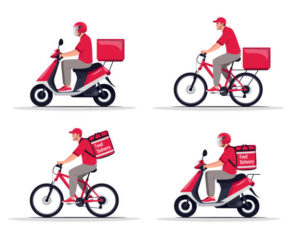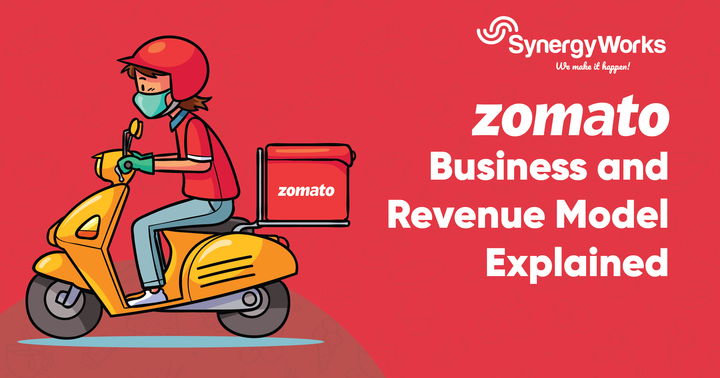Since its launch in 2008, Zomato has become a global phenomenon. With a presence in 24 countries and more than 1.4 million restaurants listed on the platform, it is now one of the most popular food delivery services around the world.
With on-demand food delivery platforms, such as Zomato, becoming increasingly popular among consumers, more and more business owners are jumping on the bandwagon, wanting to cash in on the food delivery trend. But how does Zomato make money? And what is their business model and revenue sources?
In this article, we will look at how exactly Zomato works and what its business model looks like. We’ll discuss their various sources of revenue and analyze how they have managed to sustain such rapid growth over the years.
What is Zomato: At a Glance
Zomato is an Indian restaurant search and discovery service founded by Deepinder Goyal and Pankaj Chaddah in 2008 when it was known as Foodiebay. It initially started out as a restaurant listing and review website but soon evolved into an online food delivery platform.
Deepinder and Pankaj saw that their colleagues were spending too much time searching for paper menus of local restaurants and takeaways, so they decided to make it easier for people to find the food they wanted by digitizing all the restaurant information.
Zomato has since then become one of the leading food delivery platforms in 24 countries across different continents — including Europe, Australia, Canada, Brazil, India, and UAE. It also boasts over 1.4 million listed restaurants with over 20 million ratings and reviews.
Zomato Business Model

Zomato’s business model is based on the concept of aggregation. It aggregates restaurants and cuisines from across different cities and provides customers with comprehensive information about them.
Here’s a closer look at how Zomato’s business model works:
Customer Segments

Zomato has three main customer segments – users, local restaurants, and delivery providers.
Users make up the largest segment of Zomato’s customer base and are integral to the platform’s success. As one of the most popular food discovery and delivery platforms, Zomato offers users a convenient way to search for restaurants, compare prices, read reviews, and order food from their favorite eateries.
Local restaurants are another important segment of customers that benefit from partnering with Zomato. By leveraging its massive user base and data-driven insights, Zomato helps local restaurants increase their visibility and reach more potential customers.
Finally, delivery providers are an essential part of Zomato’s business model since they provide a last-mile delivery service that makes it possible for customers to receive their orders in no time.
Value Proposition
Zomato’s value proposition is to make it easy for users to discover restaurants and order food from their favorite eateries in the quickest and most convenient way possible.
Basically, Zomato fills the gap between customers and restaurants by offering a comprehensive platform that helps them connect. As such, Zomato provides users with detailed restaurant information such as menus, photos, reviews, ratings, and geographic coordinates.
It also offers food delivery services with options like home delivery, takeaway, or dine-in. Customers can even order food online through the Zomato app and pay via multiple payment methods, including cash on delivery or online payments.
Key Partners

Zomato has partnered with several key players to expand its reach and offer better services to customers.
The company has, for example, tied up with Uber Taxi — the ride-hailing giant — to provide customers with a seamless experience for finding a restaurant and dining out.
Additionally, Zomato has partnered with several e-payment platforms like Visa and PayPal to offer users easy payment options while placing orders through the platform.
Zomato Revenue Model: How Does Zomato Make Money?
As one of the premier food discovery and delivery platforms, Zomato generates revenue through multiple sources.
The company primarily makes money through advertising and subscription fees, commissions from ordering food online, delivery charges, and other products such as Zomato Gold.
Advertising

Zomato earns a significant portion of its revenues from advertising fees paid by local restaurants that want to increase their visibility on the platform. The company offers several different plans, such as display ads, sponsored listings, promotional activities, and more. The delivery giant generates more than 70% of its revenues from this source.
Subscriptions
In addition to advertising, Zomato also offers subscription plans for local restaurants that want to get even more publicity on the platform. The company offers two different types of subscriptions – Zomato Pro for businesses and Zomato Gold for customers.
These subscription plans offer additional benefits such as priority listing in search results, free access to analytics tools, and more. The company earns a fee from each of these plans every month.
Food Delivery

Food delivery is another major source of revenue for Zomato. Every time a user orders food online through the platform, the company charges a 20-25% commission for its services. This helps the company monetize orders placed through the platform and earn a substantial income.
Live Events

Zomato also generates revenues from ticket sales of live events such as Zomaland. Zomaland is an annual food festival organized by the company, and it helps them earn significant profits from ticket sales.
Zomato Kitchens

Zomato also operates its own kitchen network called Zomato Kitchens. Through this network, the company partners with restaurants to open their own kitchens and serve food directly to customers via the platform. This helps the company earn additional revenue from delivery orders placed through these kitchens.
Also Read How to Reduce Mobile App Development Cost
Build Your Own Zomato-Like App with SynergyWorks
Considering the immense success of Zomato, it is no surprise that businesses and entrepreneurs are looking to build their own restaurant discovery and delivery platform. However, building a complex platform like this from the ground up can be extremely daunting and time-consuming — not to mention expensive.
This is where SynergyWorks comes in. As one of the leading providers of cutting-edge technologies and services, SynergyWorks has the expertise and experience to help you build your own Zomato-like app quickly and efficiently with minimal investment.
Contact us today to see how we can help you create the restaurant discovery and delivery platform of your dreams!





